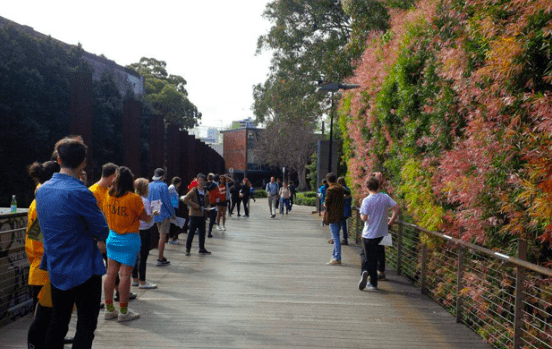Disclaimer: percentages were rounded down.
Twice every year, Eastern Avenue becomes a sea of multi coloured, branded bliss. It’s confronting and often sickening, but above all it is ripe for intense data analysis. In order to pry open the juicy secrets that lay behind our university’s elections, my crack team and I have looked at the USU, Honi Soit, and SRC presidential elections from 2015 to 2020 and analysed the colour data in the process. Because as we all know, colour is crucial.
The first thing that arose from my investigations was that the colour blue was the most popular, comprising over 20% of campaigns. This could either indicate the soothing qualities of the colour blue, or the enthusiasm of on campus Liberals (though the credibility of this theory is tempered somewhat by the fact that only 29% of blue campaigns are Liberal affiliated).
The next most popular colour is of course pink. This is mostly due to the repeated and egregious selection of pink branding by Honi Soit tickets. Almost 50% of Honi Soit tickets used pink as their primary campaign colour during this period, which in this reporter’s opinion is simply too much.
Green, yellow and red all come in at around 10% as they are the go to pigments for three of the most consistent factions on campus (Grassroots, Switch, and the Labor trio). Tragically, for the many fans of beige out there, it is the least chosen colour out of them all, clocking in at a miserable 1%.
But that’s just the frequency of each colour’s use, ostensibly the least useful information one could glean from this data. For all you electioneers out there looking for a double, chocolate dip, waffle cone scoop, I’ve got something for you.
If you want to win an election: use grey. According to my research, if you campaign with grey, you have a 100% chance of winning. It’s impossible not to: just ask the two people who ran with grey during this period. They probably won’t have time to chat as they’re most likely still riding the immense high of their electoral success, but it’s worth a try.
On the other hand, if you want to really make sure your campaign is a failure: run with beige. You’ll have a guaranteed 0% chance at success. Maybe your faction has pressured you into running, or you’ve found yourself on a Honi ticket stacked with the problematic and undesirable, or you just don’t have the time to be a BNOC. Regardless, if you want an instantaneous escape from these responsibilities, just grab your campaign slogan, whack it onto a beige background, and BAM! You’ve got yourself a landslide defeat.
But these are hardly reliable data pools: Grey was used by two campaigns (Esther Shim in 2016 and Jacky He in 2018) and beige by one (Cameron Hawkins’ 2016 bid for USU). Not exactly numbers to inspire confidence. If you look at the big hitters (any colour with 10% or more representation in the total pool of campaigns), a combination of black and white or blue are your best bets. With black and white you have a 66% chance of success, while with blue you have a respectable 58%. If they’re not your speed though, pink, red, and yellow all hover at around about a 55% success rate. But whatever you do, don’t pick purple! Of the legitimate campaign colours (sorry beige and grey), it has the most dismal chances, sitting at a miserable 28%.
What does all this tell us? Absolutely nothing. The most important thing I’ve learnt from this experience is that of all the traditional factions on campus, the Liberals have the lowest average quiz score, with a resounding 44%.
Conflict of interest: the author of this piece likes pretty colours.





